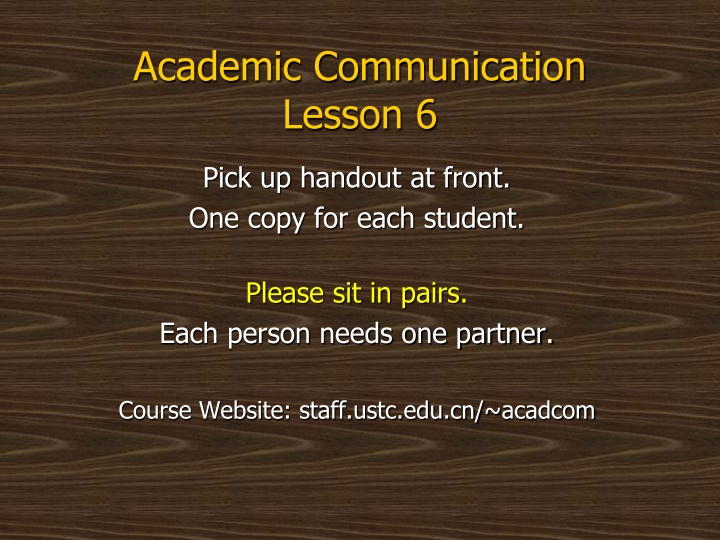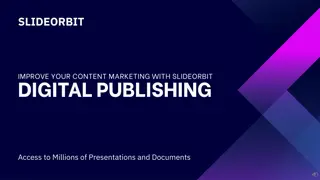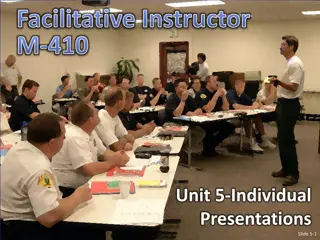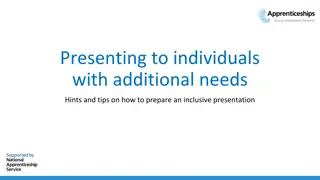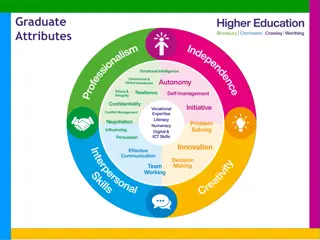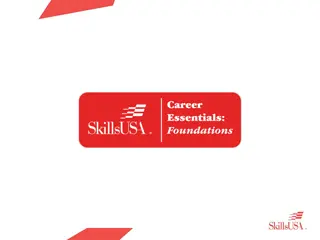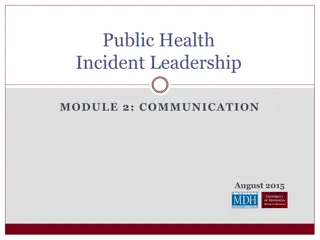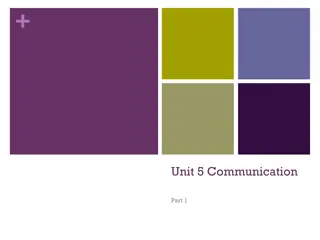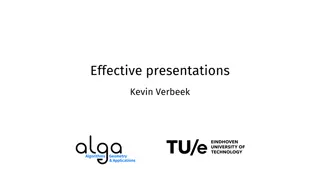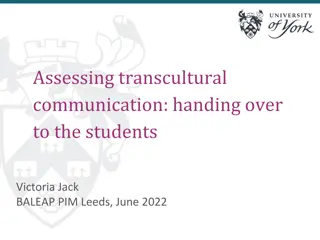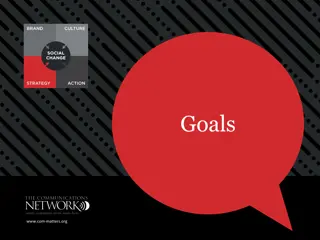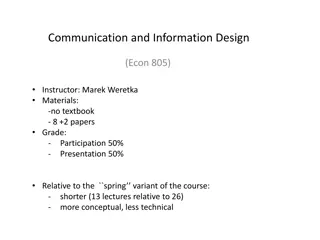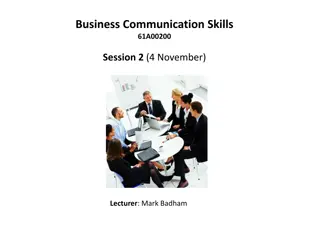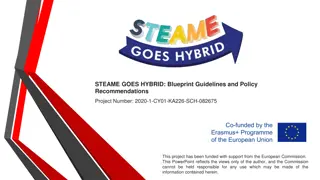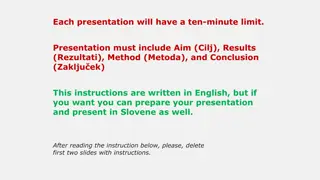Effective Communication Strategies for Academic Presentations
Enhance your academic presentation skills with lessons on listening to conclusion sections, perfecting your wording and transcript, and checking timing and slides. Learn how to deliver a concise and engaging conclusion, summarize main points effectively, and craft a flawless transcript. These practical tips will help you excel in presenting your research or findings to an audience with confidence and clarity.
Uploaded on Feb 19, 2025 | 4 Views
Download Presentation

Please find below an Image/Link to download the presentation.
The content on the website is provided AS IS for your information and personal use only. It may not be sold, licensed, or shared on other websites without obtaining consent from the author.If you encounter any issues during the download, it is possible that the publisher has removed the file from their server.
You are allowed to download the files provided on this website for personal or commercial use, subject to the condition that they are used lawfully. All files are the property of their respective owners.
The content on the website is provided AS IS for your information and personal use only. It may not be sold, licensed, or shared on other websites without obtaining consent from the author.
E N D
Presentation Transcript
Academic Communication Lesson 6 Pick up handout at front. One copy for each student. Please sit in pairs. Each person needs one partner. Course Website: staff.ustc.edu.cn/~acadcom
Listening to Conclusion Sections Read your Conclusion transcript to your partner. Listen to your partner s Conclusion and time how long it takes Does it sound like your partner is actually speaking to you (good) or like they are just reading a paper s text (bad)? After listening to each other, trade transcripts and check your partner s
Does your partners Conclusion section transcript? 1. start with words In conclusion, or something similar to indicate the talk is ending? 2. summarize 2-4 main points of the body in one sentence each? Must be concise! 3. emphasize the central idea the most important result of the research? 4. remind the audience of the motivation or give an application? 5. mention an open question or give a future research direction? Specific! (not improve our result ) 6. end with Thank you and inviting questions? 7. last for 60-120 seconds?
Checklist for Presentation Part 4A: Check Timing and Slides Check the timing for each point. Decide the timing for each slide. Do not have too much on any slide. Paragraphs and long sentences on slides? Replace them with point form!
Checklist Part 4B: Wording and/or Transcript Write a perfect sentence for each main Body point to summarize it Write a perfect one-sentence summary of any other vital (key) points Why? Read the sentences out loud! difficult word combinations? difficult sound combinations (words)? Choose words that are easy to say when you re nervous: e.g. Do you want to say x to the fifth or x to the power of five ?
Checklist Part 4B: Wording / Transcript Always write at least one sentence of exact wording for each key point. Should you write a full transcript? (every word, for every slide?) For this course: Yes! See handout. Bring to class for Lesson 8 (three weeks from today) a printout of your transcript At least an early version Project 3 [Transcript] is worth 4 credit hours. Submit Project 3 proof after Lesson 8 helps you improve your transcript & presentation.
Speaking of careful wording Informal conversation: Most people use think Formal prepared presentation: Avoid saying think in the prepared part. Think is OK in the Question/Answer part. In a prepared talk, more careful wording is expected!
Useful Sentence Patterns See the reference sheet available on the course website for Lesson 6. (http://staff.ustc.edu.cn/~acadcom) Feel free to use these patterns where you can in your presentation.
Examples from Useful Sentence reference sheet (available on website) 1. As in <some previous time>, <something was done>. As in 1993, studies recommending computerized coordination of traffic lights were ignored. 2. As in <some previous time>, <somebody did something>. As in early 1993, people tended to ignore inconvenient traffic regulations.
Examples from Useful Sentence reference sheet (available on website) 3. Because they <did something>, <the things represented by they > <had some effect>. Because they disobeyed traffic laws, taxi drivers caused many traffic jams. 4. By <[month [day],] year>, <somebody> had <done something>. By 1992, the traffic commission had realized there was a serious problem and started to investigate possible solutions By January, 1992, the traffic commission By January 27, 1992, the traffic commission
22 Examples on Useful Sentence reference sheet (available on website) The reference sheet has 22 patterns Use these to increase the number of good English sentence patterns you use in your presentations Impress your teacher!
Speaking of careful wording See Degrees of Belief on handout Use precise wording as on the handout Handout gives examples % numbers are approximate
Activity: Describe the new animal Genetic engineering: Combine the DNA What would the new animal be like? For different features, use appropriate probability sentences. Do not use the word think !!! Bad: I think it eats meat. Good: Probably, it eats meat. , It must be a meat- eater. , It might eat meat.
Activity: Describe the new animal Easy way: Use present tense as if it were in front of you: It may be able to swim. (Also could use future or conditional tense as if you were predicting results of an experiment: Probably, it will eat meat. It seems likely that it would be yellow with black stripes.)
Each pair: Discuss your new animal Name the new animal Describe the animal to each other Use all degrees-of-belief sentence patterns E.g. What may or may not be true? What must be true? What certainly is not true? (Express probabilities of ) Lives where? Can swim? fly? climb trees? Eats what? Dangerous? Make good pet? Taste good to eat? Has stripes? wings? How many legs? What size? Fast? Slow?... After a few minutes, draw a picture
Tell another pair about your animal Each pair gets 3-4 minutes. Do not say the word think . Listeners: Ask questions about the other group s animal Answer questions about your animal, using the degrees of belief vocabulary and sentence patterns. (Talk about probabilities for ) Lives where? Can swim? fly? climb trees? Eats what? Dangerous? Make good pet? Taste good to eat? Has stripes? wings? How many legs? What size? Fast? Slow?...
Please give back all the animal cards at the end of this class!!
Homework due 3 weeks from today Bring to Lesson 8 a printout of your full presentation transcript. Must include printouts of the slides Must include what you will say for each slide. Split up the text according to slides. Slide 1: <The sentences you will say> Slide 2: <The sentences you will say> etc. Write out on the transcript the exact words you plan to say while the slide is showing! Not I ll read the slide or I ll make comments. Must include the timing (duration) for each slide After Lesson 8, submit your improved transcript as your Project 3.
Next Weeks Class AC Bonus Lesson! Something special and fun Not a regular AC lesson You must attend, just like a regular lesson No preparation needed, but bring a pen.
